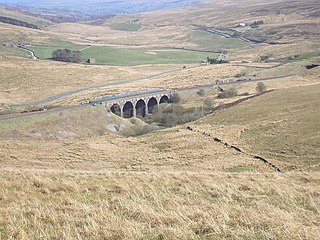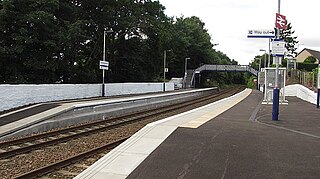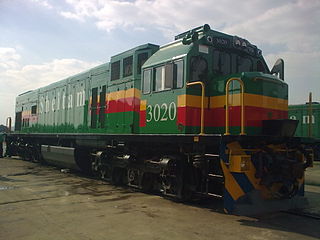External links
| Before 1850 |
|
|---|---|
| 1850s |
|
| 1860s |
|
| 1870s |
|
| 1880s |
|
| 1890s |
|
| 1870 Hatfield rail crash | |
|---|---|
| Details | |
| Date | 26 December 1870 |
| Location | Hatfield, Hertfordshire |
| Coordinates | 51°44′19″N0°12′47″W / 51.7387°N 0.2130°W Coordinates: 51°44′19″N0°12′47″W / 51.7387°N 0.2130°W |
| Country | United Kingdom |
| Line | East Coast Main Line |
| Cause | Wheel failure |
| Statistics | |
| Trains | 1 |
| Deaths | 8 (including George Blake, aged 69, and Robert Reynolds, aged 12) |
| Injured | 3 |
| List of UK rail accidents by year | |
On a frosty Boxing day in 1870 the driver of the 16:25 from London King's Cross to Peterborough noticed an 'uneasy oscillation' as he passed over Marshmoor level crossing, 2 miles south of Hatfield station. He peered back and discovered he had lost his train and pulled up. He reversed back, preceded by his fireman on foot showing a red light. They were met by the white-faced guard who told them there had been a disaster. The driver reversed direction again and sped to Hatfield to warn oncoming traffic and summon help.
It transpired that as the train approached the crossing the left hand leading wheel of the van at the front of the train had disintegrated and the coupling between the van and the locomotive had parted and the van and two following coaches had run off the rails onto the roadway demolishing a wall, and the crossing gates and posts and killing the mother and sister of a signalman who were waiting at the crossing. In addition six passengers in the two coaches were killed.
The accident inspector criticized the method of tyre fixing and recommended, not for the first time, the use of Mansell composite wheels on passenger rolling stock.

The Romney, Hythe & Dymchurch Railway (RH&DR) is a 15 in gauge light railway in Kent, England, operating steam and internal combustion locomotives. The 13+1⁄2-mile (21.7 km) line runs from the Cinque Port of Hythe via Dymchurch, St. Mary's Bay, New Romney and Romney Sands to Dungeness, close to Dungeness nuclear power station and Dungeness Lighthouse.
The Armagh rail disaster happened on 12 June 1889 near Armagh, County Armagh, in Ireland, when a crowded Sunday school excursion train had to negotiate a steep incline; the steam locomotive was unable to complete the climb and the train stalled. The train crew decided to divide the train and take forward the front portion, leaving the rear portion on the running line. The rear portion was inadequately braked and ran back down the gradient, colliding with a following train.

The Selby rail crash was a high-speed train crash that occurred at Great Heck near Selby, North Yorkshire, England, on the morning of 28 February 2001. An InterCity 225 passenger train operated by Great North Eastern Railway (GNER) travelling from Newcastle to London collided with a Land Rover Defender which had crashed down a motorway embankment onto the railway line. It was consequently derailed into the path of an oncoming freight train, colliding at an estimated closing speed of 142 mph (229 km/h). Ten people were killed, including the drivers of both trains, and 82 were seriously injured. It remains the worst rail disaster of the 21st century in the United Kingdom.

The Southall rail crash occurred on 19 September 1997, on the Great Western Main Line at Southall, Middlesex. An InterCity 125 high speed passenger train (HST) failed to slow down in response to warning signals and collided with a freight train crossing its path, causing seven deaths and 139 injuries.

The Colwich rail crash occurred on the evening of Friday 19 September 1986 at Colwich Junction, Staffordshire, England. It was significant in that it was a high speed collision between two packed express trains. One driver was killed, but no passengers died because of the great strength of the rolling stock involved, which included examples of Mk1, Mk2 and Mk3 coaches.

The Hawes Junction rail crash occurred at 5.49 am on 24 December 1910, just north of the Lunds viaduct between Hawes Junction and Aisgill on the Midland Railway's Settle and Carlisle main line in the North Riding of Yorkshire, England. It was caused when a busy signalman, Alfred Sutton, forgot about a pair of light engines waiting at his down (northbound) starting signal to return to their shed at Carlisle. They were still waiting there when the signalman set the road for the down Scotch express. When the signal cleared, the light engines set off in front of the express into the same block section. Since the light engines were travelling at low speed from a stand at Hawes Junction, and the following express was travelling at high speed, a collision was inevitable. The express caught the light engines just after Moorcock Tunnel near Aisgill summit in Mallerstang and was almost wholly derailed.

The Abermule train collision was a head-on collision which occurred at Abermule, Montgomeryshire, Wales on 26 January 1921, killing 17 people. The crash arose from misunderstandings between staff which effectively over-rode the safe operation of the Electric Train Tablet system protecting the single line. A train departed carrying the wrong tablet for the section it was entering and collided with a train coming the other way.
The Charfield railway disaster was a fatal train crash which occurred on 13 October 1928 in the village of Charfield in the English county of Gloucestershire. The Leeds to Bristol London, Midland and Scottish Railway (LMS) night mail train failed to stop at the signals protecting the down refuge siding at Charfield railway station. The weather was misty, but there was not a sufficiently thick fog for the signalman at Charfield to employ fog signalmen. A freight train was in the process of being shunted from the down main line to the siding, and another train of empty goods wagons was passing through the station from the Bristol (up) direction.

The Staplehurst rail crash was a derailment at Staplehurst, Kent on 9 June 1865 at 3:13 pm. The South Eastern Railway Folkestone to London boat train derailed while crossing a viaduct where a length of track had been removed during engineering works, killing ten passengers and injuring forty. In the Board of Trade report it was found that a man had been placed with a red flag 554 yards (507 m) away but the regulations required him to be 1,000 yards (910 m) away and the train had insufficient time to stop.
The Ais Gill rail accident occurred on the Settle–Carlisle line in Northwest England on 2 September 1913. Two long trains were both ascending a steep gradient with some difficulty, because their engines generated barely enough power to carry the load. When the first train stopped to build-up steam pressure, the driver and fireman of the second train were distracted by maintenance routines, and failed to observe the warning signals. The collision wrecked several carriages, which were then engulfed by flammable gas, killing 16 people and injuring 38.

Invergowrie railway station is a railway station which serves the village of Invergowrie, west of the city of Dundee, Scotland on the north bank of the Firth of Tay. It is the only intermediate station between Dundee and Perth, on the Glasgow to Dundee line, approximately 4 miles from Dundee, and just over 17 miles from Perth. ScotRail, who manage the station, provide all the services.

In Lockington, England on 26 July 1986, the 09:33 passenger train from Bridlington to Kingston upon Hull on the Hull to Scarborough Line struck a passenger van on a level crossing.

The 1984 Eccles rail crash occurred on 4 December 1984 at Eccles, Greater Manchester, when an express passenger train collided at speed with the rear of a freight train of oil tankers. The driver of the express and two passengers were killed, and 68 people were injured. The cause of the accident was determined to be that the driver of the express train had passed a signal at danger.

Train of Events is a 1949 British portmanteau film made by Ealing Studios and directed by Sidney Cole, Charles Crichton and Basil Dearden. It begins with a train that is heading for a crash into a stalled petrol tanker at a level crossing and then flashes back and tells four different stories about some of the passengers.
The Lichfield rail crash was a rail crash which occurred on New Year's Day 1946 at Lichfield Trent Valley station in Staffordshire, England. 20 people were killed in the accident, caused when a points failure routed a goods train into the back of a stationary passenger train waiting at the station. This event, alongside the Abbots Ripton rail accident, is the basis for the story The Flying Kipper in the Railway Series by Rev. W. Awdry.
The Wigan rail crash was a railway accident which occurred at Wigan North Western station, England, to a northbound excursion train in the early morning of 3 August 1873. Thirteen passengers were killed after derailed carriages collided with station buildings. The train was declared to have been travelling at excessive speed.
The Marden rail crash occurred on 4 January 1969 near Marden, Kent, United Kingdom, when a passenger train ran into the rear of a parcels train, having passed two signals at danger. Four people were killed and 11 were injured. One person was awarded the British Empire Medal for his part in the aftermath of the collision.
This is a list of significant railway accidents in Queensland, Australia.
The Ballymacarrett rail crash occurred on 10 January 1945 at 7:50am in the Ballymacarrett area of Belfast, County Down, Northern Ireland on the Belfast to Bangor Line of the Belfast and County Down Railway, when a train led by a heavy autotrain driving trailer ran into the back of a stopped passenger train consisting of lightweight wooden coaches. 22 died with 27 injured. It was the worst crash in Northern Ireland since 1889. The cause was found to be carelessness of the driver of the autotrain who was running too fast for conditions. Fog, unsafe railway rules, and possible distraction from passengers all may have contributed to the accident. Old lightweight rolling stock contributed to the great number of injuries and deaths. The accident led to the demise of the railway which was nationalised three years later.

On 4 January 2018, a passenger train operated by Shosholoza Meyl collided with a truck at a level crossing at Geneva Station between Hennenman and Kroonstad, in the Free State, South Africa. The train derailed, and seven of the twelve carriages caught fire. Twenty-one people were killed and 254 others were injured.